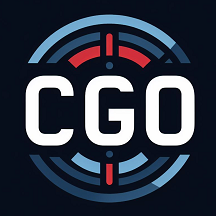Shoulder
Apprehension Test
Use: assess anterior shoulder instability.
Method: The patient is positioned supine with the arm abducted to 90 degrees and the elbow flexed to 90 degrees. The examiner applies an external rotation force to the arm.
Findings: A positive test is indicated by the patient’s apprehension or fear of dislocation. A hand should be placed over the front of the shoulder to prevent iatrogenic dislocation and the test discontinued with subjective instability.
Jobe's Test
Use: Supraspinatus testing
Method: Also known as the "Empty Can" test. The patient abducts the arm to 90 degrees and then moves it forward to 30 degrees in the scapular plane with the thumb pointing downward. The examiner applies downward pressure on the arm.
Findings: Weakness or pain indicates a supraspinatus tendon injury.
External Rotation Test
Use: Infraspinatus and Teres Minor
Method: The patient holds the arm at the side with the elbow flexed to 90 degrees. The examiner applies an internal rotation force while the patient resists.
Findings: Pain or weakness suggests injury to the infraspinatus or teres minor muscles.
Gerber's Lift Off Test:
Use: Subscapularis testing
Method: Assesses subscapularis muscle function. The patient places the back of their hand on the lower back and attempts to lift the hand away from the body.
Findings: Inability to lift the hand indicates subscapularis weakness or injury.
Hands on Hip Test
Use: Pectoralis Major
Method: Evaluates pectoralis major muscle integrity. The patient places their hands on their hips and pushes against the examiner’s resistance.
Findings: Visual asymmetry, lack of palpable tendon, weakness or pain may indicate a pectoralis major tear.
Elbow
Hook Test
Use: Distal Biceps Rupture
Method: The examiner attempts to hook a finger under the distal biceps tendon while the patient flexes the elbow.
Findings: Inability to hook the tendon suggests a distal biceps tendon rupture.
Hand and Wrist
UCL stress test
Use: assess base of thumb stability
Method: Stabilise the metacarpal with one hand, and flex the thumb’s MCPJ to 30°. Use the other hand to push the MCPJ into radial deviation, and compare the deviation to the other hand.
Findings: Complete tear indicated either by; no firm endpoint, more than 30° radial deviation, or greater than 15° compared to the other side.
Kirk Watson’s
Use: Scapholunate ligament injury
Method: Place thumb over palmar aspect of distal pole of the scaphoid, maintaining constant pressure. Move the wrist from extension/ulnar deviation to flexion/radial deviation, and back again.
Findings: Dorsal wrist pain or clunk may indicate instability of scapholunate ligament (or proximal carpus)
Hip
Bent-knee stretch test
Use: Hamstring tests
Method: Lie the patient supine, flex hip and knee to 90 degrees. Slowly straighten the knee to maximally extend.
Findings: Hamstring injuries will elicit pain in the posterior aspect of the thigh. Look for asymmetric onset of discomfort or pain between affected and unaffected sides.
Knee
Lachman’s Test
Use: ACL assessment
Method: The patient lies supine with the knee flexed to approximately 20-30 degrees. The examiner stabilises the femur with one hand while pulling the tibia anteriorly with the other.
Findings: Increased anterior translation of the tibia compared to the uninjured side indicates an ACL rupture.
Varus / Valgus stress
Use: MCL or LCL injury
Method: stabilise femur with one hand, with the tibia in the other apply a varus or valgus force. Perform at 0 and 30 degrees. Compare to contralateral leg.
Findings: Increased instability / opening suggests injury. At 30 degrees only this is isolated collateral ligament injury and can be graded 1-3 based on amount of opening. If unstable at 0 degrees this suggests a concurrent cruciate ligament injury.
Posterior Drawer Test
Use: PCL assessment
Method: The patient lies supine with the knee flexed to 90 degrees. The position of the tibia in relation to the femur is noted and if posteriorly subluxed it is reduced. The examiner applies a posterior force to the proximal tibia.
Findings: Increased posterior translation compared to the uninjured knee suggests a PCL rupture.
Patellar Apprehension Test
Use: MPFL Rupture / Patella Instability
Method: With the patient lying supine and the knee extended, the examiner applies a lateral force to the patella.
Findings: Apprehension or discomfort from the patient suggests patellar instability, often due to MPFL injury.
Achilles and Ankle
Thompson’s test
Use: Achilles tendon rupture
Method: Lie patient on their front on examination couch, with feet hanging over the edge of the bed. Squeeze the calf and observe for plantarflexion of the foot.
Findings: No plantarflexion indicates a complete tear of the Achilles tendon. Note that plantaris/toe flexor tendons can still produce plantar flexion and therefore this test should be considered as part of the whole clinical examination.
Anterior drawer test
Use: Lateral ankle ligament complex
Method: Seat patient with hip and knee flexed to 90 degrees (approximate). Cup heel with one hand and stabilise distal tibia with other. In neutral (plantigrade) ankle position attempt to drawer the heel and foot forwards.
Findings: Increased laxity and anterior drawer compared to contralateral side suggests injury
